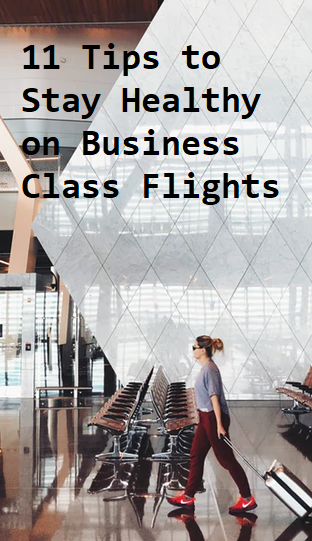
1. Hydrate – The humidity level in cabin is equivalent to that of a tropical desert, so drink lots of water, or some soothing herbal tea. Dehydration can make you more prone to bacteria and viruses.
2. Fly newer generation aircraft – Newer gen planes can fly at a higher altitude, which means atmospheric pressure is lower.
3. Help your ears – Chewing gum or candy when the plane is ascending or descending can help to relieve the rapid increase in air pressure that can hurt your ears.
4. Use the air vent – The overhead air vent, pointed to the air in front of your face, can deflect germs.
5. Or, wear a surgical mask – While this might feel strange to you, people wearing surgical masks on flights is a common site in much of the world.
6. Exercise – Before a long flight, try to exercise. Even better if you can exercise outside; this will give you an added boost of Vitamin D.
7. Don’t stress at the airport – Arrive with plenty of time so that you can keep calm and don’t have to run to catch your flight.
8. But you will want to move on the plane – If you can, get up and walk down the aisle once an hour. Having a seat with aisle access can make this easier.
9. Comfortable clothing – Wear breathable fabrics to stay cool, and don’t wear tight clothing that will cut off your circulation.
10. Compression stockings – You can purchase special compression socks that will reduce your chance of developing deep-vein thrombosis and blood clots.
11. Reduce motion sickness – You can reduce motion sickness by sitting near the wing, or by taking some form of ginger.

 Save up to 60% on Business Class. Call 1-800-435-8776
Save up to 60% on Business Class. Call 1-800-435-8776
“Fly newer generation aircraft – Newer gen planes can fly at a higher altitude, which means atmospheric pressure is lower.”
Actually, I think cabin pressure is held higher and with more humidity and frequent filtering in the new planes, hence they are better.